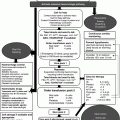Chapter 22 Amin Rahemtulla1 and Joydeep Chakrabartty2 1Department of Haematology, Imperial College Healthcare NHS Trust, Hammersmith Hospital, London, UK Multiple myeloma (MM) (myeloma) is a clonal B-cell disorder characterized by uncontrolled proliferation of plasma cells secreting immunoglobulins or light chains which can be detected in urine, serum or both [1]. Very rarely, the plasma cells may be nonsecretory. Plasma cells are mainly centred in the bone marrow but can also accumulate to form localized soft tissue or bone plasmacytomas. These can result in fractures or cause local compressive symptoms. Myeloma accounts for approximately 1% of all cancers and 10% of haematological cancers. The annual incidence in the UK is approximately 4–5 per 100,000. Myeloma occurs in all races though the incidence is higher in Africans and African Americans. It is slightly more common in men. Myeloma is a disease of older adults. The median age at diagnosis is 66 years, and only 10% and 2% of patients are younger than 50 and 40 years, respectively. In some studies, over 10% of myeloma patients required intensive care support for indications such as sepsis, acute renal failure and metabolic complications. Hospital mortality appears to be falling with time for myeloma patients admitted to intensive care, and admission to intensive care earlier after hospital admission has also been associated with lower mortality [2]. Clinical features and presentation: All myeloma cases have a prophase where a paraprotein can be found in the blood but without other features of myeloma. These plasma cell dyscrasias are monoclonal gammopathy of uncertain significance (MGUS) and the more advanced smouldering myeloma. Diagnostic criteria are explained in the following text [3]. Prognosis and staging: Serum β2 microglobulin and albumin at presentation can be combined to predict survival. Additionally, the cytogenetic markers t(4;14), t(14;16), deletion17p, deletion 13q and hypoploidy predict more aggressive disease. Typical treatment strategies are discussed in Chapter 24. Early infection is common in myeloma with up to 10% of patients dying of infective causes within 60 days of diagnosis. Atypical or opportunistic infections such as Pneumocystis pneumonia may occur after starting chemotherapy or stem cell transplantation, and viral infections such as varicella zoster
Multiple Myeloma and Hyperviscosity Syndrome
2MIOT Hospital, Chennai, India
Myeloma
Diagnostic criteria for multiple myeloma and related disorders
Multiple myeloma (all three criteria must be met)
Smouldering (asymptomatic) multiple myeloma (both criteria must be met)
Monoclonal gammopathy of undetermined significance (MGUS) (all three criteria must be met)
Common medical emergencies in myeloma
Infections
![]()
Stay updated, free articles. Join our Telegram channel

Full access? Get Clinical Tree






